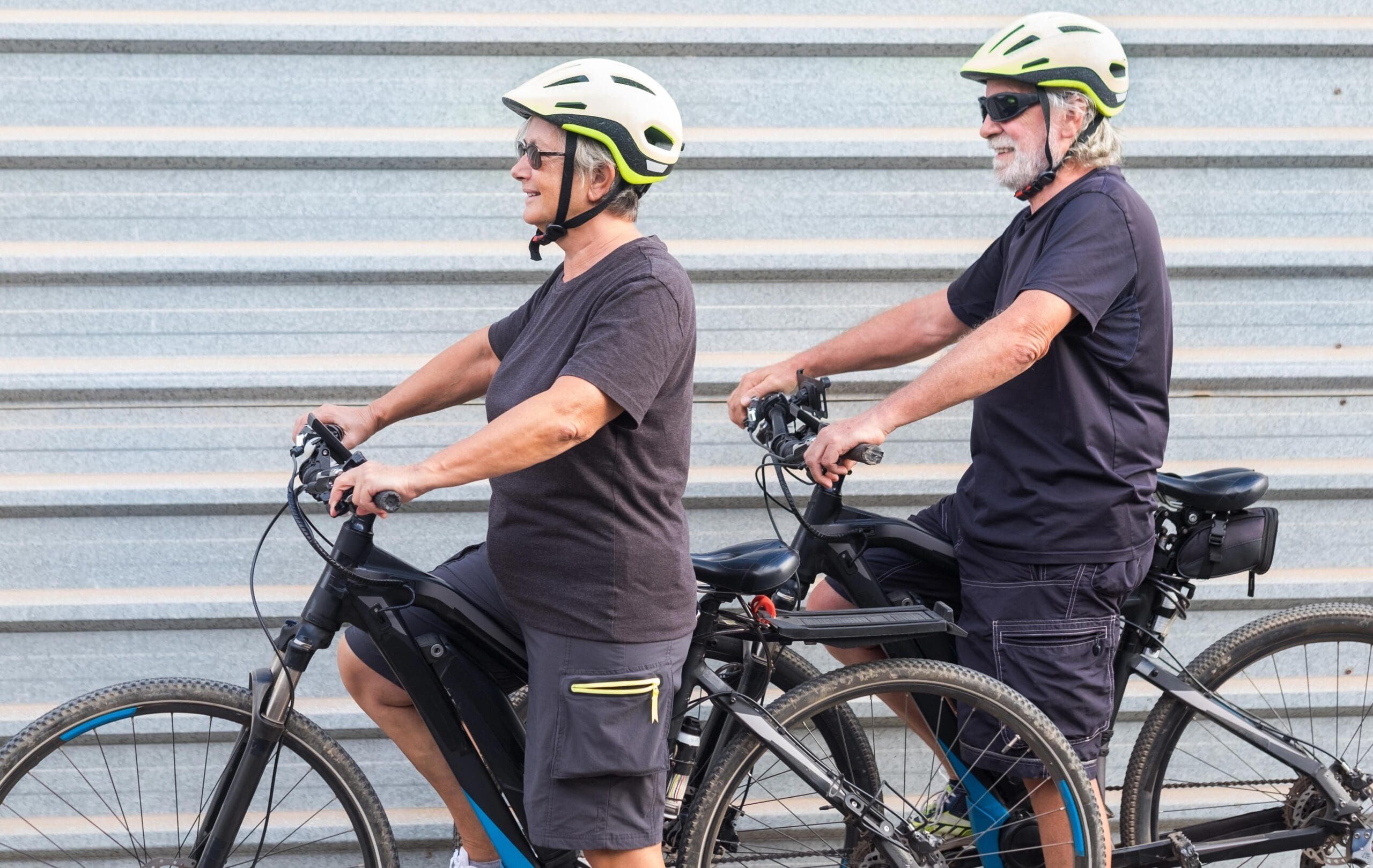
E-Bikes: A Boomer’s Guide
What’s all the fuss about E Bikes? You see them everywhere, even in high end bike shops that sell ultra-sophisticated feather-light road racers that can cost $10,000 and up.
If you’re already an Rver, well…
Ready to explore? Where you begin is really based on what you’re looking for?
Every Saturday morning the Trailblazer Sales staff meets for training. One of my favourite topics is towing. One Saturday 10 years ago, we had a sales meeting at the truck stop weigh scale. The time spent at the scale confirmed a lot of what we already knew but gave us real numbers of how a weight distributing hitch works.
A weight distributing hitch is a supplemental spring between the tow vehicle and the trailer it is towing. There are many types and brands of weight distributing hitch. That will be a topic for another post. The goal here is how the weight distributing hitch works and the scale numbers that confirm this.
First, we weighed the truck. A 2012 Silverado 1500 only the driver, full fuel tank, tools, and a canopy. The truck came in at front axle 3320lbs plus rear axle 2860lbs = total 6180lbs. The Gross Vehicle Weight Rating (GVWR) of the truck is 7000lbs. This means the available payload is GVWR 7000lbs less truck weight 6180lbs = 820 lbs. I am using pounds as this is how the trucks are still marketed.
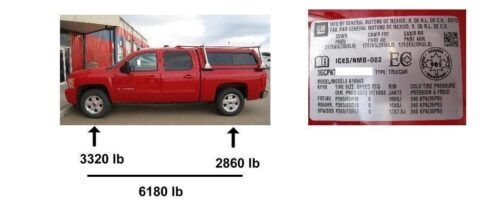
Trucks are referred to with designations 1500, 2500 and 3500. Traditionally this referred to the payload of the truck. These designations are used on today’s trucks but don’t necessarily reflect the true payload. This is important to keep in mind as payload is often the limiting factor of a truck’s capability. In most cases the truck does not have the payload to carry the hitch weight of the maximum trailer weight it is rated to pull. All travel trailers and 5th wheels have a minimum percentage of hitch weight mandated by transport Canada.
The second time on the scale we took the truck hooked to the trailer without a weight distributing hitch. This gave us some very interesting numbers. The truck now weighed 3065lbs front axle plus 3875lbs rear axle = 6940lbs total. The trailer has a hitch weight 6940lbs less 6180lbs = 760lbs hitch weight. The important consideration is the rear axle weight of the truck. Without the equalizer hitch the rear axle load increased 3875lbs – 2860lbs = 1015lbs. 760lbs hitch weight added 1015lbs to the rear axle. The rear overhang of the truck acts like a lever on the rear axle. The longer the rear overhang of the truck the more weight the trailer hitch weight will add to the rear axle. This also removes weight from the steering axle of the truck. In this case 3065lbs – 3300lbs = 235lbs off the steering axle.
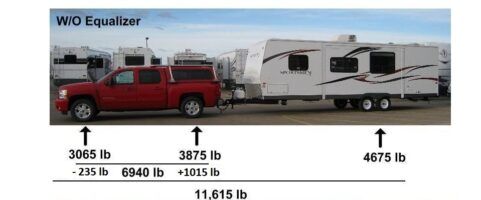
A truck and travel trailer without a weight distributing hitch is a handful on Alberta highways. Bouncing up and down on frost heaves further compounds this dangerous setup. Loading the rear axle and taking weight off the steering axle of the tow vehicle. This can result in loss of control of the entire rig.
Next, we took the truck and trailer over the scale with a weight distributing hitch. The load on the rear axle was decreased by 550 lbs vs without a weight distributing hitch. The weight distributing hitch was distributing 40% of the hitch weight to the steering axle of the tow vehicle and the trailer wheels. Adding 130lbs to the steering axle and 165 lbs to the trailer axles. The tow vehicle now has 51% of its weight on the steering axle and 49% of the weight on the rear axle. This makes the vehicle much more stable.
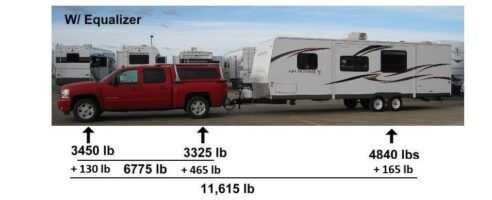
It is important to follow hitch manufacturers specifications. We could increase the amount of the weight being distributed by going to a heavier rated weight distributing hitch but too heavy of a hitch will make the ride of the tow vehicle too harsh. In extreme cases using a weight distributing hitch that is too heavy can damage the frame of the trailer. Always use the weight distributing hitch rated for the correct hitch weight of the trailer. Our service department has many years of experience and has setup thousands of hitches. We will help you find the perfect setup. A properly setup hitch will ensure stress free and safe travel.
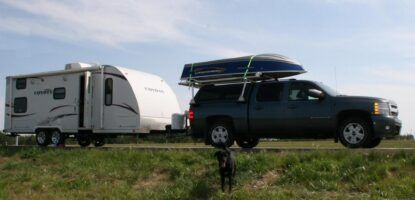

What’s all the fuss about E Bikes? You see them everywhere, even in high end bike shops that sell ultra-sophisticated feather-light road racers that can cost $10,000 and up.

Fortunately, there are upgrades you can do to your ageing travel trailer or motorised RV that don’t cost an arm and a leg and can significantly enhance your comfort and convenience on the road.

Thankfully, Canada is also home to some hidden gems. Magical destinations that lie beyond the well-trodden paths of their more famous neighbours. Let us introduce some of them to you.

How to shop for a used RV. How to shop for a pre-owned RV.

As a first date, so to speak, you might want to consider renting a vehicle to see if that flutter of infatuation has the potential to bloom into an enduring passion that prompts you to make that long term financial commitment of a purchase.
Monday | 9:00 AM – 5:00 PM |
Tuesday | 9:00 AM – 5:00 PM |
Wednesday | 9:00 AM – 5:00 PM |
Thursday | 9:00 AM – 5:00 PM |
Friday | 9:00 AM – 5:00 PM |
Saturday | 9:00 AM – 5:00 PM |
Sunday & Holidays | CLOSED |
We have updated our privacy commitment and are now collecting cookies to provide you with ads tailored to your interest across the internet. For more information about cookies and how to disable cookies, visit our privacy commitment. Learn more